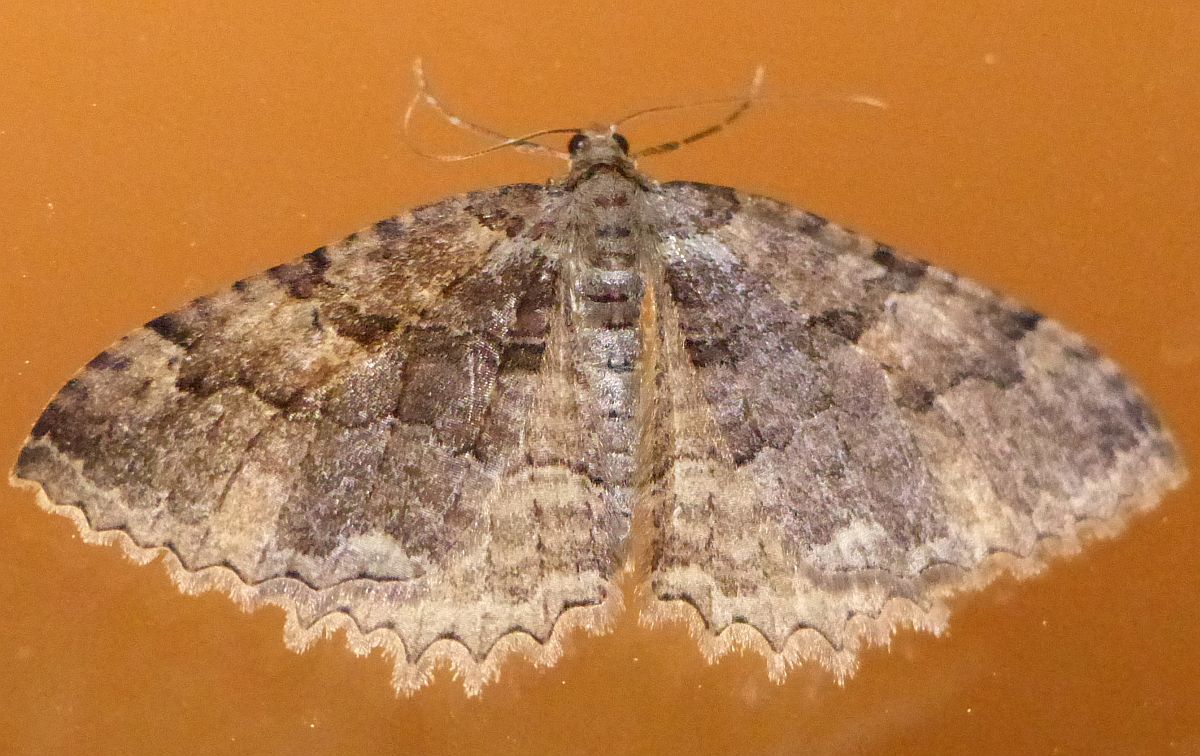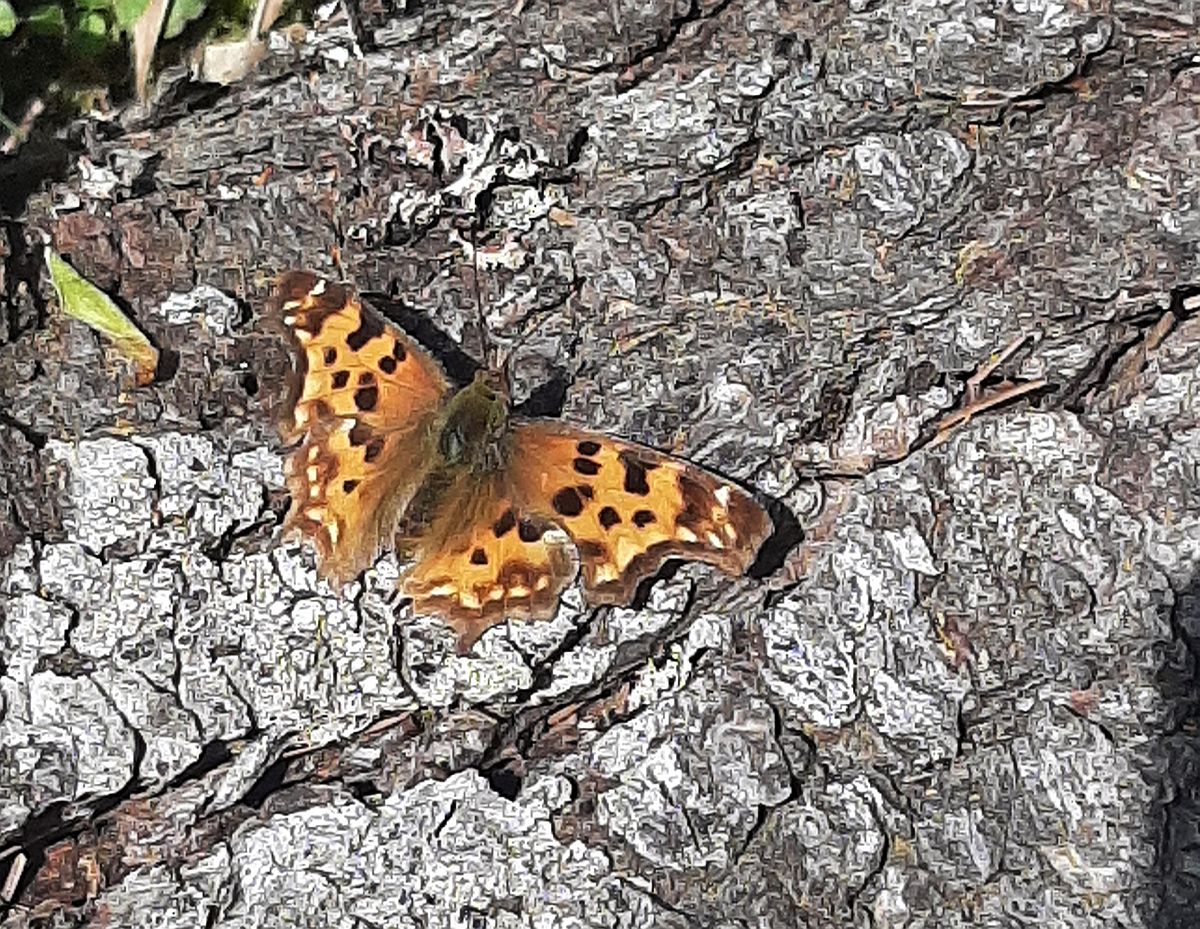2022 April 25 morning
Jeremy Tatum writes: For the last few days Invertebrate Alert has been struggling with two classic identification problems: Triphosa haesitata versus Coryphista meadii and Polygonia satyrus (Satyr Comma) versus Polygonia faunus (Green Comma); both are pairs which have been puzzling us on and off for years.
Coryphista meadii (the Barberry Geometer Moth) has several forms, some of which are easy, but one is very hard indeed to separate, from photographs, from Triphosa haesitata (the American Tissue Moth). Jochen Möhr sent the photograph below from his Metchosin home on August 22. Jochen and I initially opted for C. meadii, while Libby Avis and Jeremy Gatten opted for T. haesitata. I think I am persuaded, however, by the point raised by Libby and by Jeremy G. that it is a little early in the season for meadii to be in flight (as well as by some details of the pattern and shape)and that it is more likely to be haesitata. This view is reinforced in that last week I already found several haesitata ova on leaves of Cascara. Thus the odds are that Jochen’s moth is probably Triphosa haesitata.

Probably Triphosa haesitata (Lep.: Geometridae) Jochen Möhr
Jeremy Tatum continues: While struggling with this, we received from Jeff Gaskin and Kirsten Mills the following photograph of a comma butterfly from the Nature Centre at Francis/King Park, April 24. This was one of three that they saw there. The several comma species on Vancouver Island can be identified (not without difficulty!) from their undersides, but they can be awfully difficult from just the uppersides. While satyrus is almost our default species here, Gordon Hart regularly sees the scarcer faunus at his Highlands property, so I asked Gordon for an opinion. Gordon writes that he is not totally sure, but he thinks it is a worn faunus, and, I agree. The Green Comma is known to occur along the nearby Hydro line clearing (I found a caterpillar there last year), so I think we can safely say that Jeff and Kirsten’s butterfly is a Green Comma.

Green Comma Polygonia faunus (Lep.: Nymphalidae) Kirsten Mills
On April 23 Gordon had on his Highlands property, two Mourning Cloaks, a Green Comma, and one Western Spring Azure. Lots of Mesoleuca gratulata moths, but no elfins or orangetips.
Jeremy Tatum writes: During this exceptionally cold spring, we have had very few butterflies, and during a two-hour walk along the Panhandle Trail recently I noted no orangetips, blues, elfins or commas.
And Jochen writes:
On April 23, I drove around in Metchosin in a sunshiny pleasant afternoon with 15 °C outside temperature. I went from the Metchosin Village core down William Head Road, turning south from Taylor Road on to Rocky Point Road, down Matheson Lake Road to the Matheson Lake parking lot, back via the Devonian Park parking lot, on to the Taylor Road end at Taylor Beach and back home on William Head Road. And all I spotted was one little white moth, perhaps a geometrid. (That would almost certainly be Mesoleuca gratulata – Jeremy)
Jeremy Tatum found this little beetle at The Universty of Victoria, April 24. Thanks to Scott Gilmore for identifying it as the Nut Leaf Weevil, Strophosoma melanogrammum. The pencilled square is 1 cm on each side.

Nut Leaf Weevil Strophosoma melanogrammum (Col.: Curculionidae) Jeremy Tatum
